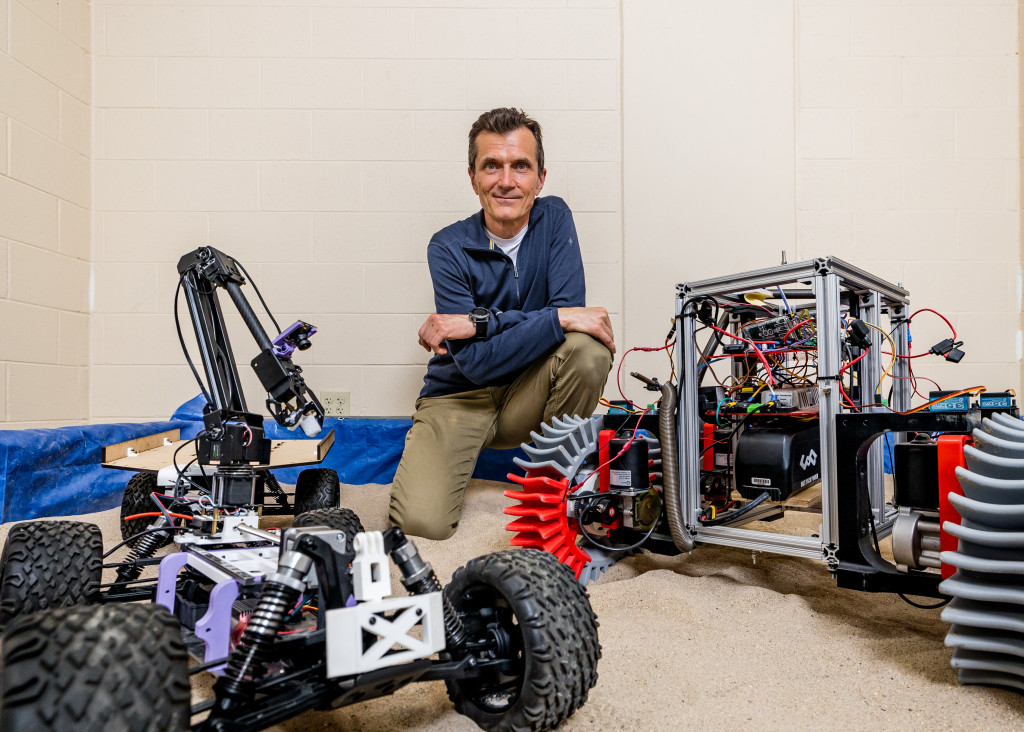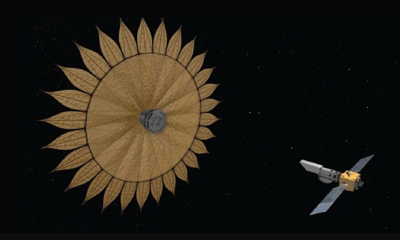Education
Engineers Discover Key Flaw in Space Rover Terrain Testing

When robotic space rovers encounter obstacles on extraterrestrial terrain, they can become immobilized, as demonstrated by the Mars rover Spirit in 2009. Engineers on Earth often intervene to free these vehicles, but a new study by mechanical engineers at the University of Wisconsin–Madison (UW–Madison) reveals a significant flaw in how these rovers are tested before their missions.
The researchers discovered that current testing methods may lead to overly optimistic predictions about a rover’s ability to navigate soft surfaces on celestial bodies, such as the moon or Mars. Their findings, published in the Journal of Field Robotics, underscore the necessity for more accurate simulations to enhance rover mobility.
Uncovering the Testing Flaw
Mechanical engineering professor Dan Negrut and his team utilized computer simulations to analyze the performance of rovers on low-gravity surfaces. Traditionally, engineers have accounted for the moon’s weaker gravitational pull by creating prototypes that weigh one-sixth of the actual rover’s mass. Testing these lightweight models in desert environments was considered sufficient for understanding how they would behave on the moon.
However, Negrut’s research revealed that this approach overlooks a critical detail: the strong influence of Earth’s gravity on sand. On Earth, sand is more compact and supportive compared to the looser, “fluffier” surface found on the moon. This difference means that rovers may experience reduced traction on the moon, increasing the likelihood of becoming stuck in soft terrain.
“In retrospect, the idea is simple: We need to consider not only the gravitational pull on the rover but also the effect of gravity on the sand to get a better picture of how the rover will perform on the moon,” Negrut explained.
Advancements in Simulation Technology
The team conducted their research as part of a NASA-funded project to simulate the VIPER rover, which is intended for a lunar mission. They employed Project Chrono, an open-source physics simulation engine developed at UW–Madison, to model the rover’s interactions with various surfaces.
While simulating the VIPER rover’s movements, the researchers noticed discrepancies between their Earth-based tests and the simulations of its performance on the moon. Further investigation using Project Chrono allowed them to identify the testing flaw that could lead to mission failures.
Negrut emphasized the broader implications of their research, stating, “It’s rewarding that our research is highly relevant in helping to solve many real-world engineering challenges.” The open-source nature of Project Chrono has led to its adoption by numerous organizations, from the aerospace sector to military applications, improving the understanding of complex mechanical systems.
The research has received support from organizations including the National Science Foundation and the U.S. Army Research Office, reflecting its significance in advancing both space exploration and terrestrial engineering.
Negrut highlighted the rarity of producing industrial-strength software from an academic setting, noting, “There are certain types of applications relevant to NASA and planetary exploration where our simulator can solve problems that no other tool can solve.”
As the team continues to innovate and enhance Project Chrono, they aim to keep pace with emerging challenges in both space and Earth-based applications. Their work stands as a testament to the importance of rigorous testing and simulation in ensuring the success of future extraterrestrial missions.
-

 Technology5 months ago
Technology5 months agoDiscover the Top 10 Calorie Counting Apps of 2025
-

 Technology3 weeks ago
Technology3 weeks agoOpenAI to Implement Age Verification for ChatGPT by December 2025
-

 Health3 months ago
Health3 months agoBella Hadid Shares Health Update After Treatment for Lyme Disease
-

 Health3 months ago
Health3 months agoAnalysts Project Stronger Growth for Apple’s iPhone 17 Lineup
-

 Health4 months ago
Health4 months agoErin Bates Shares Recovery Update Following Sepsis Complications
-

 Technology5 months ago
Technology5 months agoDiscover How to Reverse Image Search Using ChatGPT Effortlessly
-

 Technology3 months ago
Technology3 months agoElectric Moto Influencer Surronster Arrested in Tijuana
-

 Technology5 months ago
Technology5 months agoMeta Initiates $60B AI Data Center Expansion, Starting in Ohio
-

 Technology2 months ago
Technology2 months agoDiscover 2025’s Top GPUs for Exceptional 4K Gaming Performance
-

 Technology5 months ago
Technology5 months agoRecovering a Suspended TikTok Account: A Step-by-Step Guide
-

 Health5 months ago
Health5 months agoTested: Rab Firewall Mountain Jacket Survives Harsh Conditions
-

 Lifestyle5 months ago
Lifestyle5 months agoBelton Family Reunites After Daughter Survives Hill Country Floods





















